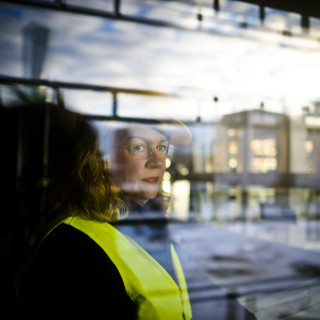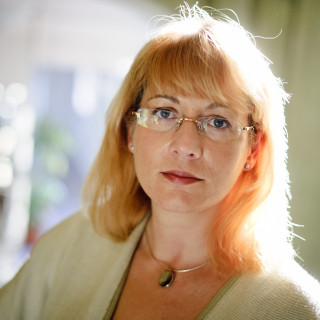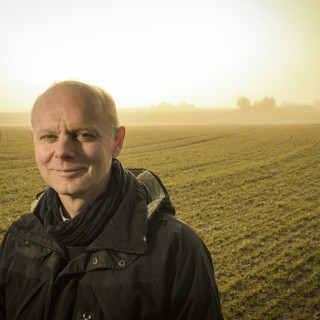Green light for green economy
Alarms about climate change come thick and fast, but world leaders are not able to agree on strong measures. Astrid Kander, Professor of Economic History, believes in a green economy and wants Sweden to take the lead.
“I believe in technology and like to hope that it can offer solutions. However, this requires powerful taxes on carbon dioxide emissions combined with cap and trade systems*; politicians have to dare to take tough decisions”, says Astrid Kander when we meet at the School of Economics and Management at Lund University.
Along with research colleagues Paul Warde and Paulo Malanina, she has written the book Power to the people. Energy and economy in Europe, 1600–2000.
In the book, the authors note that energy consumption relative to GDP stabilised in Europe during the 1970s and predict that a service-based economy, increasingly efficient information and communication systems and low-energy technology will lead to reduced energy consumption in the future as well.
Cycling has to become cool
– But in order to achieve a green economy, we need to reduce carbon dioxide emissions in various ways while creating a recoil effect in the opposite direction.
The recoil effect is usually referred to as something that ‘eats up’ part of the savings from improved energy efficiency. The most obvious example is buying a car with lower petrol consumption, and then driving more. However, with the right economic incentives, we can choose not to drive more, but instead to use the money we save on fuel to insulate our houses, install solar panels and further reduce energy consumption.
We also need to change attitudes to quality of life and what makes us feel good. It has to become ‘cool’ to cycle and to spend money on visiting restaurants, for example – an activity that does not produce high carbon dioxide emissions.
“My idea is that Sweden should lead the way and introduce tougher carbon dioxide taxes to encourage more energy-efficient solutions and renewable energy sources. We could become carbon dioxide neutral without it threatening our welfare to any great extent. However, the market must trust that political decisions are taken from a long-term perspective.”
New calculation model
There has long been debate over the best way to calculate carbon dioxide emissions. When consumption of imported goods is included, emissions per capita in the Western world increase significantly, even when exported goods are subtracted.
“In order to achieve a green economy, we need to reduce carbon dioxide emissions.”
Astrid Kander recently launched a new calculation model, in which she takes into account the fact that production of exported goods in Sweden is largely powered by clean energy such as water power and carbon neutral nuclear power.
With her calculation model, Swedish emissions come to 4.4 tons of carbon dioxide per capita instead of 9 tons. This is compared with the level calculated as reasonable – perhaps one ton of carbon dioxide per person per year – if we are to prevent a temperature rise of two degrees.
“We cannot rest on our heels, but I think we have reason to be a bit proud. Sweden has heavy industry that has made major energy savings. A lot of our energy supply comes from biofuels and there is major potential for the expansion of wind power.”
In Astrid Kander’s view, the advantage of her new model is that individuals and nations are given responsibility for what they can
influence. Individuals are given responsibility for their total consumption and nations are given responsibility for energy and emissions policies.
“My hope is that the model will encourage global model calculations that will gain a hearing from the politicians at the negotiating tables.”
Text: Liselotte Fritz
Photo: Kennet Ruona
Published: 2013







